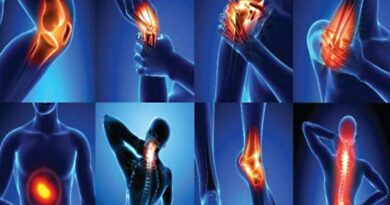Successful Concussion Physical Therapy
Concussion physical therapy is a specialized form of rehabilitation designed to aid individuals recovering from a concussion, a mild traumatic brain injury (mTBI) that affects brain function. Concussion Physical Therapy often result from blows to the head or body that cause the brain to move rapidly within the skull, leading to symptoms such as headaches, dizziness, balance issues, and cognitive impairments. While many individuals recover fully within weeks, others experience persistent symptoms requiring targeted intervention. Physical therapy plays a critical role in managing these symptoms, enhancing recovery, and preventing long-term complications.
Understanding Concussions
A concussion disrupts normal brain function temporarily, and its symptoms can vary widely. Common signs include:
- Physical symptoms: Headache, nausea, vomiting, dizziness, balance problems, sensitivity to light or noise, and fatigue.
- Cognitive symptoms: Difficulty concentrating, memory issues, and confusion.
- Emotional symptoms: Irritability, mood swings, and increased anxiety or depression.
- Sleep disturbances: Trouble falling or staying asleep, or sleeping more or less than usual.
The Role of Physical Therapy in Concussion Management
Physical therapy addresses specific deficits caused by a concussion, focusing on areas such as balance, vestibular function, cervical spine health, and exercise tolerance. The therapist conducts a comprehensive evaluation to identify impairments and develop an individualized treatment plan.
Key Components of Concussion Physical Therapy
Vestibular Rehabilitation
Vestibular dysfunction is a common issue following a concussion, often manifesting as dizziness, vertigo, or balance problems. Vestibular rehabilitation therapy (VRT) involves exercises designed to:
- Improve gaze stability: Techniques like VOR (vestibulo-ocular reflex) exercises enhance the ability to maintain focus on a target while the head moves.
- Reduce dizziness: Habituation exercises help the brain adapt to movements or environments that trigger dizziness.
- Enhance balance: Balance training exercises, such as standing on uneven surfaces or single-leg stances, improve postural control and reduce fall risk.
Cervical Spine Therapy
The neck often sustains strain during the traumatic event causing a concussion. Cervical spine dysfunction can contribute to headaches, dizziness, and limited range of motion. Physical therapy interventions may include:
- Manual therapy to relieve muscle tension and improve joint mobility.
- Stretching and strengthening exercises targeting neck and shoulder muscles.
- Postural training to correct alignment and reduce strain on the cervical spine.
Oculomotor and Visual Training
Concussions can impair visual function, affecting tasks such as reading, tracking moving objects, or focusing on close-range activities. Physical therapy for oculomotor dysfunction includes:
- Saccadic exercises: Training the eyes to move quickly and accurately between two points.
- Smooth pursuit exercises: Enhancing the ability to track moving objects.
- Convergence exercises: Addressing issues with focusing on near objects by improving coordination between the eyes.
Exercise-Based Therapy
After a concussion, individuals may experience exercise intolerance, with symptoms worsening during physical activity. Graded exercise therapy involves gradually increasing physical activity levels under supervision to restore cardiovascular fitness and reduce symptoms. Key aspects include:
- Monitoring heart rate and symptoms to ensure safe progression.
- Low-impact activities, such as walking or stationary biking, tailored to the patient’s tolerance.
- Transitioning to more intensive activities as symptoms improve.
Balance and Coordination Training
Concussions often disrupt proprioception and coordination, increasing the risk of falls and impairing functional mobility. Balance and coordination exercises include:
- Static and dynamic balance tasks, such as standing on one foot or performing tandem walking.
- Incorporating dual-task exercises that combine physical and cognitive challenges, such as walking while solving math problems.
- Using tools like balance boards or foam pads to challenge stability.
Multidisciplinary Collaboration
Effective concussion management often involves collaboration among healthcare professionals, including physicians, neurologists, psychologists, and occupational therapists. Physical therapists work closely with this team to ensure a holistic approach to recovery. For example:
- Coordination with neuropsychologists to address cognitive and emotional symptoms.
- Partnering with occupational therapists to address challenges in daily activities.
- Communicating with physicians regarding progress and adjustments to the treatment plan.
The Importance of Early Intervention
Early intervention in concussion management can significantly reduce the risk of prolonged symptoms, also known as post-concussion syndrome (PCS). Physical therapists educate patients and caregivers about:
- Recognizing symptom triggers and managing activity levels to avoid overexertion.
- The importance of rest and gradual return to normal activities.
- Techniques for symptom management, such as using sunglasses for light sensitivity or pacing cognitive tasks to prevent fatigue.
Challenges in Concussion Rehabilitation
Concussion rehabilitation presents unique challenges, including:
- Subjective Symptoms: Many concussion symptoms are self-reported, requiring therapists to rely on patient feedback for treatment adjustments.
- Variability in Recovery: Recovery timelines vary significantly, influenced by factors such as age, severity of injury, and pre-existing conditions.
- Psychological Impact: Anxiety, depression, and frustration can complicate recovery, necessitating a compassionate and supportive approach.
Advancements in Concussion Therapy
Technological advancements are enhancing concussion therapy outcomes. Innovations include:
- Virtual Reality (VR): VR-based rehabilitation offers immersive environments for balance and visual training.
- Wearable Sensors: Devices track movement and provide real-time feedback on balance and gait.
- Computerized Cognitive Testing: Tools like ImPACT (Immediate Post-Concussion Assessment and Cognitive Testing) assist in monitoring cognitive recovery.
Conclusion
Concussion physical therapy is a critical component of recovery for individuals affected by this common yet complex injury. By addressing specific deficits through tailored interventions, physical therapists help patients regain function, reduce symptoms, and prevent long-term complications. The collaborative, patient-centered approach of concussion rehabilitation ensures that each individual receives the support and resources needed to achieve a full recovery and return to their daily activities with confidence.




